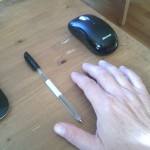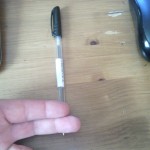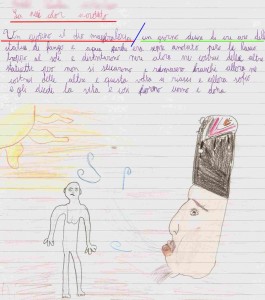By Luca Canever, TAGteach Faculty
Managing the reinforcement for a group of people is one of the major difficulties that we may encounter. Especially if the people in question are 20 kids, 11 years old, with interests and personalities different from each other.
For the last two months I’ve been working in a school as a teacher. For the first time, I have the chance to use the marker with a large group — a group with no particular desire to be at school! How can we reinforce them? Some of the kids enjoy candies, some others like beads or extra time for recess. There are (they exist!) students who find study itself reinforcing, but, they are very, very, very rare.
What I have decided to do is to take a continuous rotation between different schedules of reinforcement: today we work for extra time for recess; tomorrow we will earn beads and bracelets; after that we will earn points for watching a movie, or to enjoy some favorite activity. It may seem an insurmountable obstacle and demoralizing at a first glance to find reinforcers suitable for a group of people. I think it could be done with a little imagination and desire to come up with new strategies. The more we become able to grasp behaviors to reinforce the easier it will be to reinforce these behaviors.
I used TAGteach in different situations; and even if I’m not using the marker, the principles of the methodology are always present (or at least I hope so…).
TAGteach for Writing Skills
PEN HOLDING: Many students have an incorrect pen holding habit. This can cause problems with the joints of the wrist, and difficulty in writing that could translate into, “I do not like to write,” or “I cannot write.” So if we want to educate future Shakespeares properly, holding the pen properly is the first step.
The pen must be taken between thumb and forefinger and then it should rest on the middle finger. I found two good targets for these behaviors on YouTube.
First: put the pen on the table with the tip facing you.
Second: use the index and middle fingers of the left hand to position thumb and index of the writing hand to the correct height on the pen: exactly on the edge indicated by the index finger. The two photos show the two targets.
TAGteach for cursive writing and improving cognition
The difference is immediately obvious. 15 days after this intervention, the writing is still stable on the line, without me having to do other sessions. Not only that. I noticed that the way the boy is able to organize his thoughts for writing is becoming more streamlined and flowing — as if being able to write in order helps him think in order.
TAGteach for reading
About Luca
 a scientist, teacher and TAGteach Faculty member from Italy. Luca has been with TAGteach since the beginning and has been involved with development, application and training for many years. Luca has used TAGteach in sports, parenting, dog training and classroom teaching. He is dedicated to promotion of positive reinforcement based teaching and training. Visit his website at: http://www.tagteachitalia.com/
a scientist, teacher and TAGteach Faculty member from Italy. Luca has been with TAGteach since the beginning and has been involved with development, application and training for many years. Luca has used TAGteach in sports, parenting, dog training and classroom teaching. He is dedicated to promotion of positive reinforcement based teaching and training. Visit his website at: http://www.tagteachitalia.com/TAGteach in the Classroom Webinar with Luca
Learn more about how to use TAGteach in the classroom in this 1 hour recorded webinar with Luca. You’ll find out how to improve your learners’ success with reading and writing skills, how to encourage them to help and teach each other, how TAGteach can help with classroom management and safety drills training.
Questions for Luca or Other TAGteachers?
Join our Facebook group: TAGteach Forum and ask Luca and the other TAGteach Faculty and practicing TAGteachers your question or share your successes.



